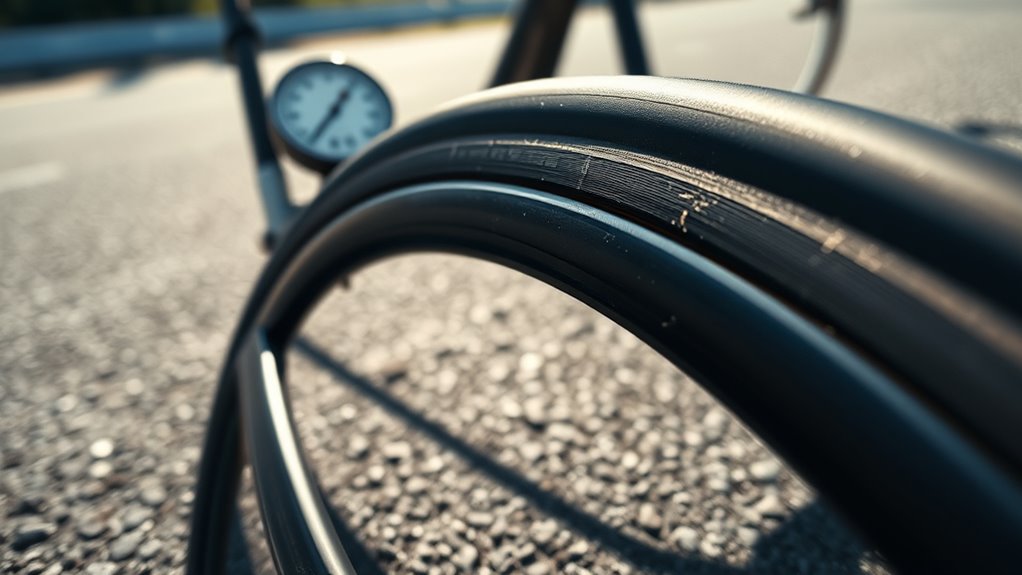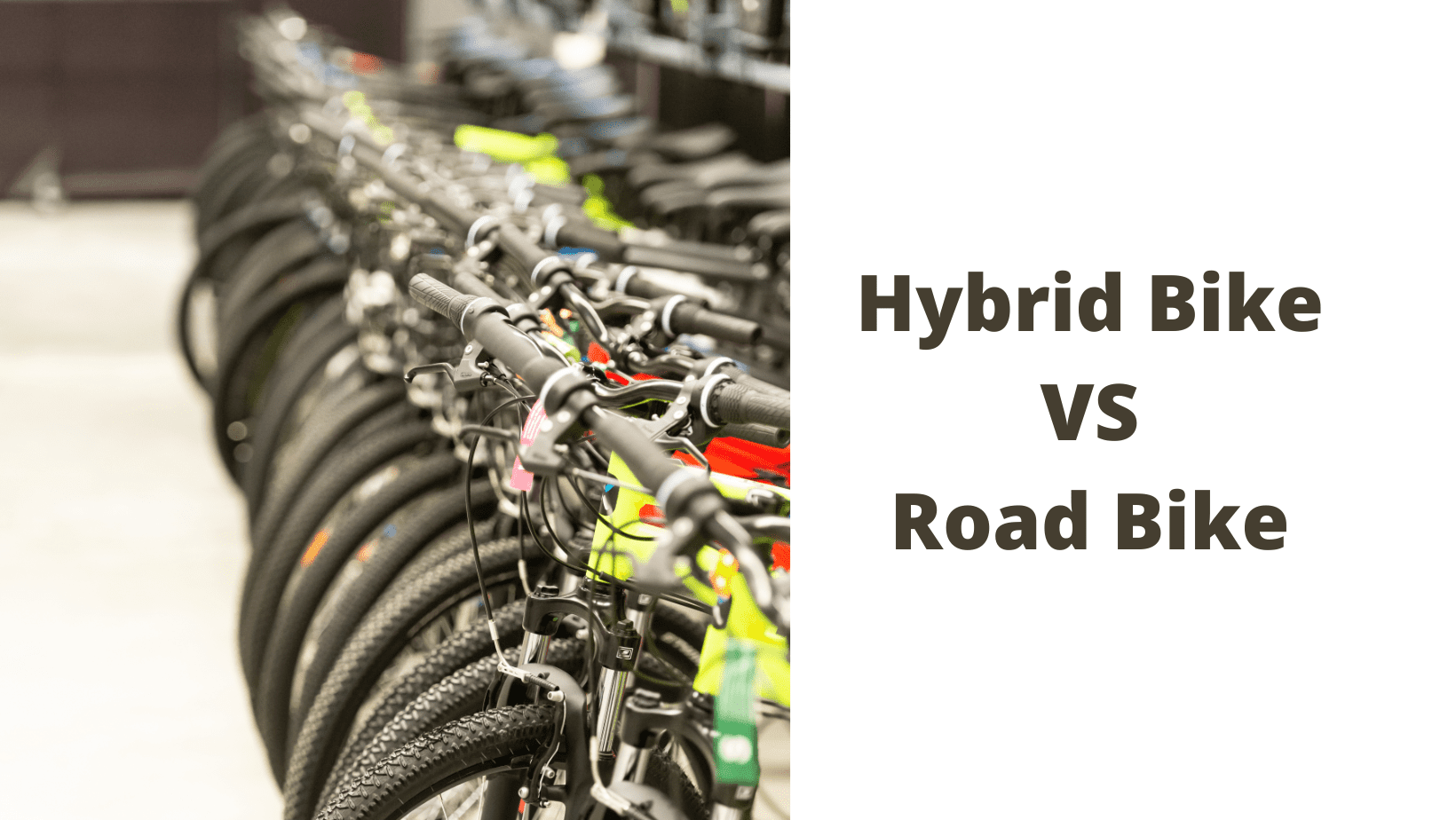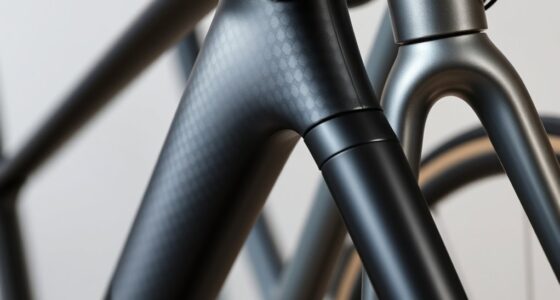Choosing the right road tire width and pressure mainly depends on your riding style and terrain. Wider tires improve grip and stability on rough surfaces, while narrow tires are better for speed on smooth roads. Proper inflation helps maintain control, reduces rolling resistance, and improves comfort. Overinflating decreases grip and absorbs less shock, while underinflating increases resistance and reduces efficiency. Knowing how to balance width and pressure will help optimize your ride—keep going to discover more tips for perfect setup.
Key Takeaways
- Wider tires provide more grip and stability, especially on rough or slippery surfaces.
- Proper tire pressure maintains optimal contact with the road, balancing grip, comfort, and efficiency.
- Narrow tires reduce rolling resistance on smooth surfaces but may offer less grip.
- Overinflation decreases grip and comfort, while underinflation increases rolling resistance and reduces control.
- Select tire width and pressure based on terrain and riding style to optimize performance and ride quality.

Have you ever wondered how the width and pressure of your road tires impact your ride? These factors directly influence how your bike handles, how much effort it takes to pedal, and how comfortable your journey feels. When you adjust tire width and pressure, you’re essentially tuning your bike’s performance to match your riding style and terrain. One of the key elements affected by these choices is tire grip, which determines how well your tires stick to the road during turns and acceleration. Wider tires generally offer a larger contact patch with the pavement, increasing grip and providing more stability, especially on rough or slippery surfaces. Conversely, narrower tires tend to have less grip but reduce rolling resistance, making pedaling easier on smooth roads.
Wider tires improve grip and stability, while narrower tires reduce rolling resistance for faster rides.
Pressure levels also play a vital role in tire performance. When you inflate your tires properly, they maintain ideal shape and contact with the road. Underinflated tires increase rolling resistance because the tire deforms more as it rolls, creating additional friction and making your ride feel sluggish. Overinflated tires, on the other hand, become less compliant, reducing their ability to grip uneven surfaces and absorbing shock. Finding the right balance in tire pressure is fundamental; too low, and you’ll encounter more rolling resistance and reduced efficiency, but too high, and you risk sacrificing grip and comfort. Properly inflated tires maximize tire grip by ensuring the tire maintains good contact with the pavement, providing better control and confidence during your ride.
The choice of tire width also influences rolling resistance, which is the force resisting the movement of your bike forward. Narrower tires typically have lower rolling resistance on smooth surfaces because they cut through the air and pavement more efficiently. This makes them ideal for racing or fast-paced riding on flat terrain. Wider tires, while offering increased grip and comfort, usually have higher rolling resistance due to the larger amount of rubber in contact with the ground. However, on rougher terrains, wider tires can actually reduce rolling resistance by better absorbing shocks and maintaining consistent contact with uneven surfaces. These trade-offs mean you should consider your typical riding conditions when choosing tire width and pressure.
In the end, understanding how tire grip and rolling resistance are affected by width and pressure helps you improve your ride. Whether you’re aiming for speed, comfort, or stability, making informed adjustments ensures your bike performs at its best, giving you a smoother, more efficient experience every time you hit the road.
Frequently Asked Questions
How Does Tire Width Affect Overall Vehicle Stability?
Tire width impacts handling, making your vehicle more stable during cornering and straight-line driving. A wider tire affects grip by increasing the contact patch, which improves traction on the road. This added contact helps prevent skidding and enhances overall vehicle stability, especially at higher speeds or on challenging surfaces. Keep in mind, though, that wider tires can also increase rolling resistance and affect fuel efficiency.
What Are the Safety Risks of Incorrect Tire Pressure?
Imagine your tires as the foundation of your journey, each one vital for safety. Incorrect tire pressure risks uneven tire tread wear and can lead to poor wheel alignment, increasing the chance of blowouts or loss of control. When your tires aren’t properly inflated, your vehicle becomes unstable, especially in turns or emergency maneuvers. Always check and maintain the right pressure to keep your ride safe, smooth, and responsive.
How Often Should Tire Pressure Be Checked During Long Trips?
During long trips, you should check your tire pressure at least once every two to three hours. Use tire pressure monitoring systems if available, and practice pressure adjustment techniques like using a reliable gauge and adding or releasing air as needed. Regular checks help maintain *ideal* pressure, ensuring safety, better fuel efficiency, and tire longevity. Don’t forget to verify that your tires are cold before measuring for the most accurate readings.
Can Changing Tire Pressure Improve Fuel Efficiency?
Yes, changing tire pressure can improve fuel efficiency. Many tire pressure myths suggest overinflating is better, but maintaining proper pressure is key. By following pressure maintenance tips and keeping your tires at the recommended PSI, you reduce rolling resistance and improve mileage. Regularly check your tire pressure, especially before long trips, to guarantee ideal performance and fuel savings. Proper tire care directly impacts your vehicle’s efficiency and safety.
How Do Road Conditions Influence Optimal Tire Pressure?
Did you know that improper tire pressure can reduce your fuel efficiency by up to 3%? Road conditions greatly influence your ideal tire pressure. On rough, uneven surfaces, you should lower pressure slightly to improve grip and comfort. Weather conditions also matter; in cold weather, your tires lose pressure, so check them regularly. Adjusting your tire pressure based on road surface and weather guarantees safer, more efficient rides.
Conclusion
Remember, the right tire width and pressure can make all the difference in your ride. Don’t underestimate the impact of proper setup—it’s like the saying goes, “A stitch in time saves nine.” By taking the time to adjust your tires correctly, you’ll enjoy a smoother, safer journey every time. Keep these tips in mind, and your bike will thank you for it. After all, small details lead to big improvements.














